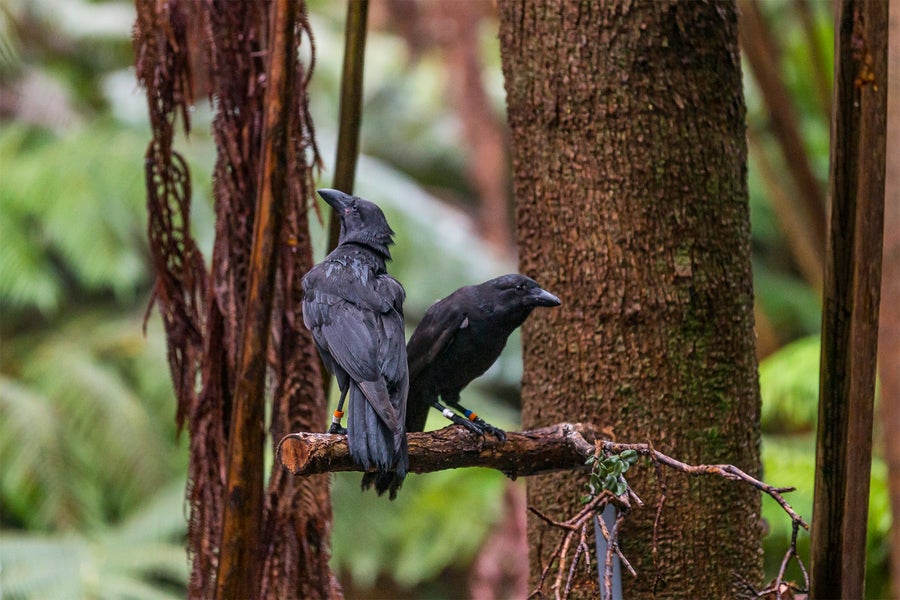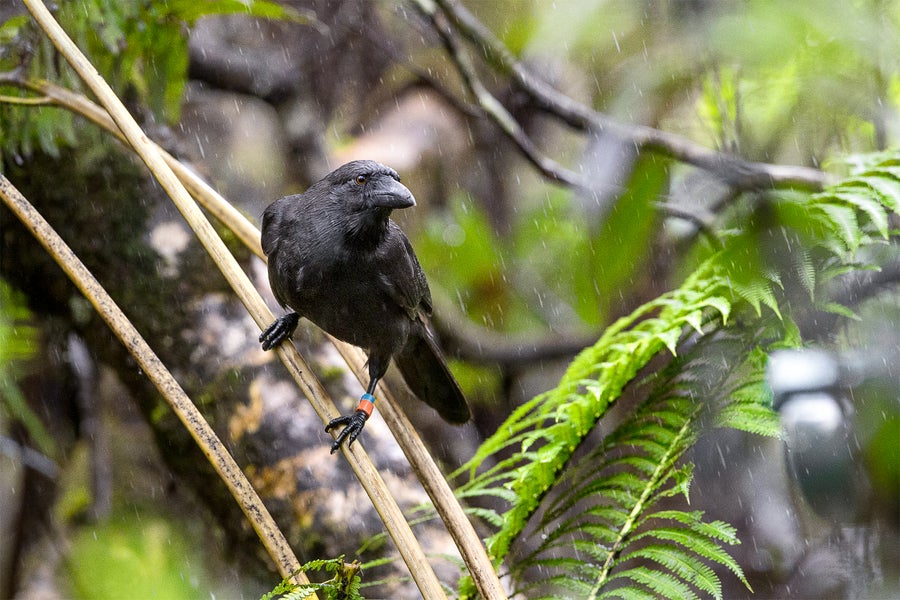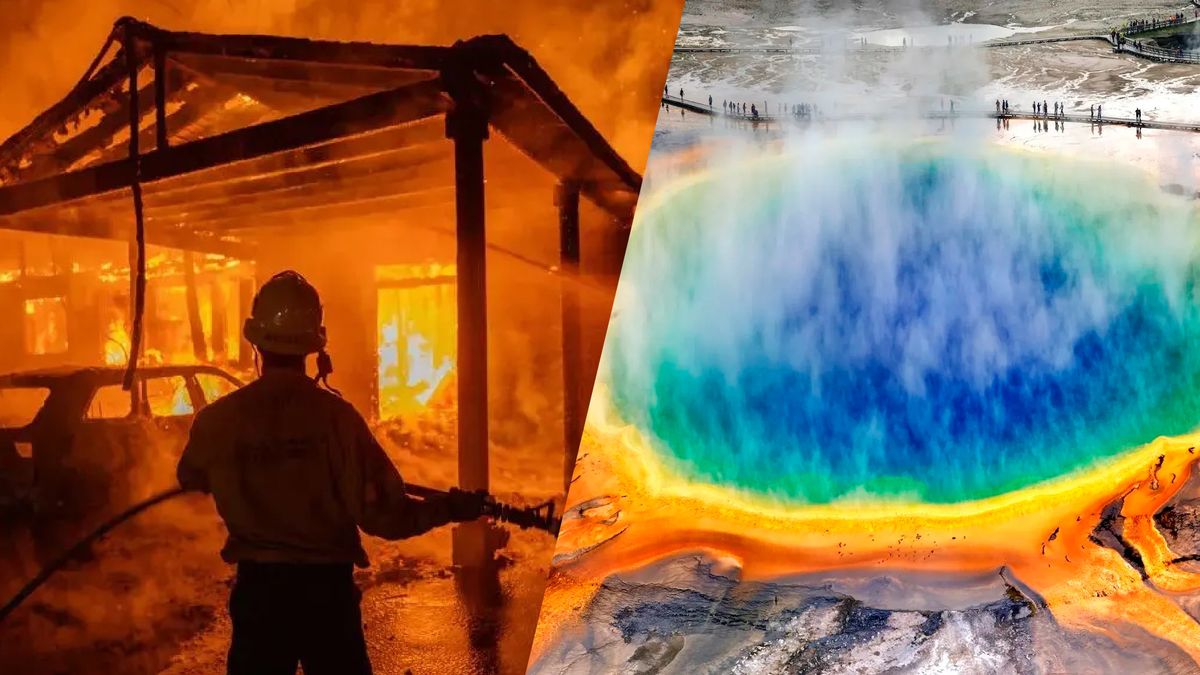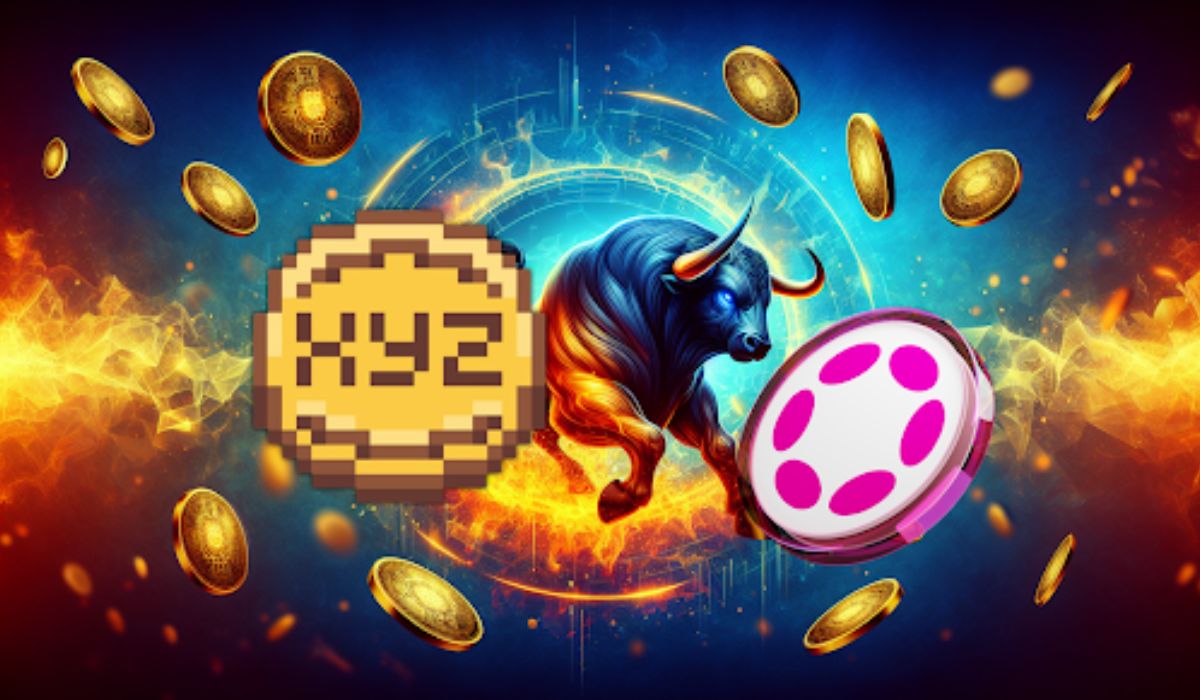In Hawaiian tradition, the souls of the dead journey to the afterlife by jumping from cliffside promontories called “leaping places” into Pō, the swirling sea of time where gods and forebearers dwell. But without the guidance of an ‘aumakua—an ancestral spirit that can take the form of an animal—the dead can’t make the leap. Without their ‘aumakua, these lost souls are doomed to an eternity of wandering and hunger, chasing moths and crickets for sustenance forever.
For decades, one important guide of souls has been absent from Hawaiian skies: the ‘alalā, a crow species native only to the islands, has been extinct in the wild since 2002. Multiple attempts to reintroduce captive-born ‘alalā to Hawaii’s Big Island have been unsuccessful, in large part because of the ‘io, or Hawaiian hawk, the ‘alalā’s last surviving natural predator.
But now new hope is taking wing: a fresh class of five young ‘alalā has been released into the wild on the slopes of the Haleakalā volcano on the island of Maui, where ‘io are absent.
On supporting science journalism
If you’re enjoying this article, consider supporting our award-winning journalism by subscribing. By purchasing a subscription you are helping to ensure the future of impactful stories about the discoveries and ideas shaping our world today.
“Conservation doesn’t happen overnight,” says Hannah Bailey, conservation program manager for the Hawaiian Endangered Birds Program at San Diego Zoo Wildlife Alliance. “We’re still learning, and so are the birds.”

The ‘alalā is the most endangered corvid in the world and one of just two corvid species known for widespread tool use.
San Diego Zoo Wildlife Alliance
The ‘alalā, which resembles a raven more than a crow, is the most endangered corvid in the world and one of just two corvid species known for widespread tool use. It’s also among the chattiest corvids, with more than 50 documented calls, and it’s referred to in Hawaiian mythology as the “bird with the big voice.” The ‘alalā is an omnivore, and its diet mostly consists of fruit and insects gleaned from the forest understory, but it also eats flower petals, nectar, mice and the nestlings of smaller birds.
To Hawaiians, the ‘alalā is an ‘aumakua “who functions as a guardian, guide and protector,” says kuʻualoha hoʻomanawanui, a professor at the University of Hawaii at Manoa, who specializes in moʻolelo, or the traditional knowledge that includes folklore and mythology. “ʻAumākua often appear in dreams [or] visions or called out to the people they protected to warn of danger or sometimes to scold them for wrongdoing.”
“Because there is a familial and symbiotic relationship, people did not harm or eat their ‘aumākua but fed them and helped them when in need,” she adds.
It became clear the ‘alalā were “in need” when the population plummeted in the 1970s and 1980s. Avian malaria, invasive predators such as feral cats, and habitat loss caused by the expansion of cattle ranches had reduced the population to just a few dozen individuals. Scientists with the state of Hawaii began pulling eggs from nests in the mid-1970s to create a genetic ark in captivity.
Today two captive breeding centers operated by the San Diego Zoo Wildlife Alliance are home to more than 100 ‘alalā—but a stable population in captivity is a world away from the wild, Bailey explains. Reintroduction is a messy process when animals are several generations away from living in nature. That’s especially true when the threats that brought the population to its knees are still present.

Five ‘alalā were released on Maui, where it natural predator, the ‘io, or Hawaiian hawk, is not present.
San Diego Zoo Wildlife Alliance
Previous reintroduction attempts in the 1990s and again in the late 2010s saw high fatality rates. Some birds seemed to die from malnutrition, whereas others contracted toxoplasmosis or avian pox. Over the years, ‘io have taken down at least 16 released ‘alalā and caused conservationists to abort reintroductions. Though those losses were “heartbreaking,” Bailey says, “I caution people against saying these were failures. The amount of information we learned—about behavior, bonds between the groups, even food and resource usage—that’s all so valuable to making our future plans.”
The five birds released in Maui are between a year and a year and a half old—a window where the birds are at “a particularly good age for learning how to navigate new things,” Bailey says. “You can kind of think of them as a rambunctious group of teenagers at the moment.”
Bailey and her team purposefully cluster hatchings to create a “class” of nestlings of a similar age “because we want them to form social relationships,” she says. Scientists aren’t sure whether ‘alalā form large social groups or prefer to keep to themselves outside of mating season, but Bailey says she hopes they’ll band together to fend off predators by “mobbing” them like other corvid cousins do.
There’s a clear power dynamic in the cohort of two females and three males. “The females are a little pushy,” Bailey says. “Even though they’re younger, they’re just like, ‘Nope, we’ve got this. This is how you do things.’” And they’re almost always right, she says.
From a young age, the birds were introduced to native Hawaiian food sources, including insect species and fruits. A relatively new addition to their coursework is antipredator training: the young crows were taught to recognize ‘io, barn owls, and house cats and to associate them with alarm calls from adult ‘alalā. “If they didn’t respond properly, that lowered their chances of being in the release cohort,” Bailey says.
Before being helicoptered to the Maui release site, the graduating birds received a traditional blessing from hula master Kapono‘ai Molitau, who spoke of the importance of ‘alalā as “hulu kūpuna,” or honored elders. The class of crows then spent several weeks acclimating in outdoor aviaries on the slopes of Maui before their release into a remote forest reserve.
Initially, the birds will have food dropped off for them to ease their transition to self-sufficiency. This new class will also be outfitted with tracking harnesses, which will allow the researchers to follow their movements—or learn their fates.
What does success look like for this cohort? Bailey says it doesn’t mean establishing a wild breeding population right away. “We want to see them using the landscape well,” she says. “We want to see survival.”










Leave a Comment